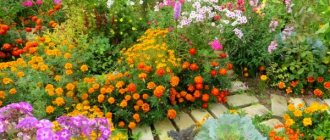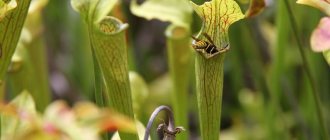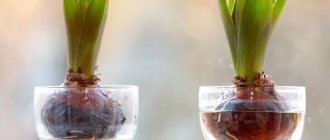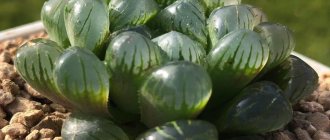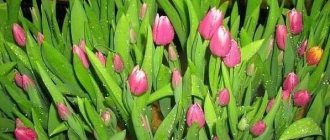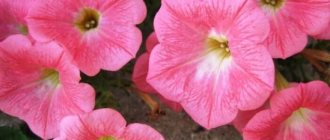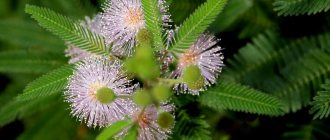In winter, every vitamin counts, especially proven ones. And natural medicines can come in handy at any moment. So why not create a branch of a green pharmacy on your own windowsill?
Of course, not all medicinal herbs and flowers can be grown at home; most of them are whimsical and require large areas. But there are also those that get by just fine with a standard flower pot and minimal care. Perhaps some of them are already growing in you?
Sweet basil on the window
Why it is useful : Basil has antiseptic, antioxidant, antiviral and antibacterial properties, improves the functioning of the gastrointestinal tract, serves as a natural appetite stimulant and energy booster.
Many people grow basil in the window for culinary purposes, not realizing that it is also very healthy. Its bright taste makes this herb an excellent addition to meat, fish, and vegetable dishes. Growing basil in the kitchen is not difficult. Sow the seeds in a wide container, cover with soil and moisten. Cover the container with a bag or lid and ventilate once a day. When the seedlings straighten up, remove the cover, and after the first pair of true leaves appear, plant the basil in large pots. The bushes have a fairly powerful root system, so the capacity for them should be at least 2 liters. Be sure to plant basil with drainage and choose loose soil for it.
It is advisable to keep basil in a south-facing window, provide it with at least 10 hours of daylight, and protect it from drafts and hypothermia. Water the basil 2-3 times a week, not allowing the soil to dry out, and feed it with vermicompost or Agrolife (1 tsp per plant) every 3-4 weeks.
- 10 Most Common Problems When Growing Basil
We’ll tell you how to avoid problems and eliminate them in time so as not to lose your basil harvest.
Diseases and pests of perennial flowers
As a rule, errors in care lead to the appearance of diseases. The most common diseases:
- The appearance of reddish spots is rust. In this case, fungal spores are located on the back side of the foliage.
- The appearance of a whitish coating is powdery mildew. Gradually, the affected parts of the plant die.
- The fungal disease Fusarium can be identified by damage to the root collar - the plant loses its tone and the stem becomes thinner.
- Due to increased dampness, gray rot develops rapidly. Brown spots that are covered with fluff appear on parts of the plant.
If symptoms of the disease are detected, the bushes should be treated twice with fungicide solutions.
If chamomile is attacked by insect pests, insecticides should be applied immediately. Treat with insecticides twice at weekly intervals.
Oregano on the window
What is useful : Oregano decoction helps with colds, as the plant has antiseptic and anti-inflammatory properties. In addition, oregano is taken for gastrointestinal disorders, insomnia, or to improve brain function.
The easiest way to obtain oregano is by dividing the rhizomes in the fall. To do this, the bush is dug up and the root is cut into several parts so that 3-4 healthy buds remain on each. The rhizomes are placed in pots with a volume of at least 3 liters, on a layer of drainage and fertile soil, watered and sprinkled with a 3-5 cm layer of soil. Then the oregano is watered 2 times a week and thoroughly illuminated. Every 3 weeks, oregano is fed with complex fertilizer for indoor plants, and a month after germination, the leaves begin to be cut off. All inflorescences on oregano must be removed regularly, otherwise the branches will become woody and the beneficial properties will decrease.
- What is a garden without oregano? 13 good reasons to plant oregano in your garden
Do you like spicy medicinal herbs? Is fragrant and healthy oregano already growing in your garden?
Care and reproduction
Chamomile can be safely called a flower for the lazy. It requires minimal care, which every gardener can do. Only young daisies need regular and constant watering. Watering should be done only when the soil dries out. Mature plants can withstand drought for up to two to three weeks.
The only thing that will have to be done is to plant the flowers after three to four years, since the plant does not tolerate thickening well. The best time to transplant is mid-autumn.
In order for garden chamomile to bloom magnificently, it must be fed. In the spring, you can use any nitrogen fertilizers; during the period of bud formation, potassium and phosphorus fertilizers are suitable.
Another feature of chamomile is that it overwinters well. There is no need to wrap it up with anything special. The upper part, which remains uncovered by snow, dies, but in the spring a new period begins, and the plant sprouts new shoots. Only some varieties need insulation.
Lavender on the window
Benefits : Lavender is a natural relaxant. It relieves spasms, relaxes, calms. Lavender oil and dried branches have antibacterial properties, for which they are valued in cosmetology.
You can only grow small-leaved lavender indoors; other species will not take root. It is advisable to plant it in the fall with shoots or rooted cuttings in deep pots with a volume of 2-3 liters. Lavender will grow only with additional lighting up to 12 hours of daylight, at an air temperature of 20-23°C. It needs loose, drained soil, monthly fertilizing with complex flower fertilizer and rare (once every 7-10 days) but abundant watering.
- How to grow lavender from cuttings and seeds at home
Step-by-step instructions with photos for propagating lavender. Everything is much simpler than you think!
Caring for Transvaal Chamomile
This tropical resident needs good lighting; it can easily tolerate direct rays in the morning and evening. It is advisable that the light period be 12 hours. The flowering of gerbera is directly related to the quality of its care. So, in the summer he feels great outdoors, but if this is not possible, you need to regularly ventilate the room.
Fresh air activates the process of delivering nutrients to the leaf mass and inflorescences. Transvaal chamomile actively grows foliage from mid to late summer. During this period, the duration of daylight exceeds 12 hours, so the buds do not form. But from the end of August the time of rapid flowering begins, lasting until the very end of November.
Proper care of gerberas involves maintaining optimal temperature conditions. This plant is quite hardy, but do not forget that it is the quality of care that will ultimately affect its flowering. Transvaal chamomile, like most indoor flowers, during its life cycle alternates between dormant phases and active growth phases. Having entered another period of hibernation, it may stop blooming altogether.
During the winter months, gerberas should be kept at a temperature of at least 15 degrees. It’s good if the plant is additionally illuminated, the flowering period will be longer. There is no need to keep the pot on the balcony in winter - lowering the temperature to +12 degrees puts the flower into a state of deep dormancy, while all processes inside it are inhibited, and it can bloom only after awakening. The probability of the death of a flower in such conditions is not small.
Keep in mind that gerberas come from tropical countries; home conditions should not differ radically from the usual natural ones. For the same reason, Transvaal chamomile does not like frequent temperature fluctuations and prefers high humidity. For spraying, it is better to choose a very fine spray bottle to create the effect of water mist and not damage the inflorescences.
In the summer months, gerbera grows well and develops at 20-25 degrees above zero.
Watering and fertilizing
Naturally, an exotic plant from the tropics loves constant, abundant watering. This should be water at room temperature that has been standing for one to two days. Cold water threatens big troubles. It is especially dangerous to use it in hot weather; the roots become overcooled and can become sick and even die.
The soil in the flowerpot should not dry out, but stagnation of liquid is also harmful - the root system begins to rot. Parasitic nematodes love to settle in waterlogged soil, and then it is almost impossible to destroy them. Proper watering can be called the key to successful gerbera growing. It is necessary to pour water along the edge of the flowerpot; the liquid should not fall on the rosette. It is useful to spray the flower, but the water should not get on the beautiful daisies.
Another watering option is to use a tray. Just pour warm water into it and leave it for half an hour, then pour out whatever is left in it. However, using this method of moistening, the amount of watering should be increased during the heating season and at the end of winter. The latter is due to the fact that with the beginning of spring the plant begins to actively develop.
Melissa officinalis on the window
Benefits : Melissa has anti-inflammatory and antibacterial properties. Added to tea it soothes, and applied externally it reduces itching from insect bites. The herb has a beneficial effect on digestion and improves mood.
Growing lemon balm at home is as easy as growing mint. You can transplant the bush into a pot in the fall, or sow it with seeds, and after the sprouts become 5-7 cm in height, plant them. You need to feed lemon balm no more than once a year, water it every 3-4 days, it is not necessary to add additional light - it grows well in the shade and with short daylight hours. But you need to trim it regularly, otherwise the bush will take up the entire window.
Peppermint on the window
Benefits : Peppermint relieves colic, stomach pain, and normalizes digestion during flatulence. It is often used in tea, but it is better to use it without prior heat treatment.
Mint can grow all year and constantly produce abundant greenery. It has enough natural light even in winter; it can also be fertilized 1-2 times a year. But mint needs to be watered often - it prefers loose and moist soil. If there is no watering for several harvests, the leaves on the mint will begin to dry out. Mint can be sown with seeds, but then it will take quite some time before the first greens are harvested. It’s better to take a couple of bushes from the garden - they will be enough for the family to last all winter.
- 14 reasons to plant mint in your garden
Plant mint in your garden, and you will not only get fragrant leaves for tea, but also a lot of benefits from this plant.
Uses of chamomile
Chamomile is used as a medicinal plant. Chamomile leaf tincture can be used as a gargle or inhalation for colds. Chamomile has a natural tendency to calm the nervous system and stimulate the appetite. Dried chamomile is used in sachet form.
Chamomile (Tanacetum parthenium, Matricaria parthenium) is a perennial herbaceous plant of the Asteraceae family. It is known by several names: "pyrethrum panna", "matricaria exceptional", "chrysanthemum panna" and "tanacetum". The maiden daisy and its beautiful garden forms look good. The perennial is sometimes labeled as a low-grade weed. This is explained by the endurance and undemanding nature of the plant, which grows, blooms and reproduces well even when no one cares for it.
Not everyone knows how useful virgin chamomile is. In medieval times it was called "maiden's grass". The name (parthenos means "maiden" in Greek) is probably due to the fact that it helps relieve menstrual pain. In ancient times, chamomile was kept in pharmacies and monastery gardens as a medicine for women in prison. It was prescribed as an anti-inflammatory and antipyretic for fever and catarrh.
Chamomile can also be used in the household. First of all, it is a reliable natural repellent. And how nice it is to find openwork shrubs with bright green leaves that remain fresh and sometimes bloom even in the gloomy pre-spring period!
Parsley on the window
Why it's useful : Parsley contains high levels of vitamins A, B, and C, iron, and potassium. It is useful for hypertensive patients if consumed regularly, and a decoction of it can help with indigestion.
Parsley on a windowsill will grow well if it receives bright sunlight in the morning, and the rest of the time the bush is in partial shade. It only needs to be illuminated on the north and west windows. Choose deep containers for parsley, fertile soil, into which you immediately add compost. Do not forget to water and spray the parsley every other day, and also remove all flower stalks immediately after they appear.
- Parsley face masks - how to make at home
Recipes for homemade parsley masks for different skin types.
Types and cultivation
The indoor version of daisies is completely unpretentious. Knowing some secrets of proper cultivation, you can end up with a beautiful bush. Indoor daisies not only please the eye, but also bring practical benefits. This is another advantage of these useful plants.
Decorative chamomile
Feels great both on the windowsill and in the garden.
There are different shades of the daisy flower.
Gardening stores often offer seeds of various hybrids that grow no more than 20 cm. From such a seed you can grow chamomile at home. The ideal place for the flower to grow would be a windowsill on the sunny side. The container must be not too deep, but rather spacious and wide. A white clay or plastic pot will do. It is necessary to place drainage at the bottom of the container. For planting, light soil rich in nutrients is suitable, which does not retain water, but allows it to pass through well.
If you have already purchased a small plant, it is recommended to replant it. To do this, you need to mix universal soil, sand, and soil from the greenhouse in equal parts. Such soil is rich in minerals due to rotted fertilizers in the form of sawdust, ash, and chicken droppings. In addition, this soil mixture is suitable not only for indoor daisies, but also for other plants: balsams, begonias, roses. At the beginning of the autumn heating season, it is recommended to place containers with daisies on the windowsill from the southwest. So the plants will continue to delight with their flowering for some time.
Chamomile on the window
Why it is useful : Medicinal chamomile is most often added to tea as a soothing, relaxing agent. However, it can also be used externally to relieve irritation and allergic reactions, added to the bath as an antiseptic, and drunk to normalize processes in the gastrointestinal tract.
To grow chamomile in the house from seeds, you will need a well-lit windowsill and fertile, loose soil. Use a mixture of garden soil, sand and peat in a 1:1:1 ratio and wide containers for growing. If you add organic fertilizers to it when preparing the soil mixture, you will not need to feed chamomile in the next 4-5 months. The main task is to organize a 12-hour daylight hours and spray the plants with warm water.
How to grow chamomile?
Despite the fact that this plant surrounds us in abundance in nature, many are interested in learning how to grow chamomile from seeds. These seeds are easy to collect from mature plants or buy at a flower shop.
They should be planted in early spring immediately in open ground, waiting for the snow cover to melt. If you sow chamomile in early August, you will get a winter sowing. You can even do this in the fall a couple of weeks before frost, carrying out pre-winter sowing.
- Choose a well-lit area for planting. Dig up the soil, add organic matter (humus or manure) in the amount of a bucket per square meter. Instead of organic fertilizers, you can use mineral fertilizers - nitrogen (40 g/m2) or phosphorus (15 g/m2).
- The prepared soil should be watered generously.
- Sow seeds using 0.5 g per meter of area.
- Cover the crops with well-loosened soil or mulch; crushed peat is ideal, which will not allow the soil to dry out.
- To germinate seeds, regular watering is required to ensure the soil is always moist. When the plants rise, abundant watering should be greatly moderated, watering only the dried soil.
- If necessary, plants can be pruned after the first leaves appear so that they do not sit too densely.
- In the summer, all that remains is to periodically loosen the soil, weed the weeds and prepare flowers for the winter to drink chamomile tea.
There is another simple way to grow medicinal chamomile. At the beginning of autumn, you need to find and dig up a bush of this plant in the meadow along with a voluminous lump of earth and transfer it to your plot, having previously fertilized and watered the soil there. When the flowers finish blooming, seeds will fall to the ground, which will germinate in the spring and produce generous shoots.
Growing chamomile at home
Those who do not have their own plot may be interested in how to grow chamomile from seeds in a pot. Most often, low or hybrid potted pyrethrums or cornflowers are on sale. You can also grow chamomile from seeds.
- For chamomile to live, you need to set aside the sunniest window sill.
- It is better to use shallow but wide pots made of white plastic. Place drainage at the bottom.
- The soil needs to be nutritious and light, not retaining moisture. It is good to replant the purchased plant in a mixture containing equal parts sand, soil from a greenhouse (containing forest soil, ash, rotted sawdust and chicken droppings) and universal soil. This substrate is suitable for many indoor plants - impatiens, pelargoniums, roses, coleus, crotons.
- When the heating season begins in the fall, the pots with daisies should be moved to the southwest side, where the chamomile will continue to bloom. You can supplement the lighting with artificial lighting. As winter approaches, the shoots need to be cut off and the pot placed in a bright, cool room.
- Watering should be reduced until February, but the earth ball should not be allowed to dry out completely. At the end of winter, return the pot to warmth, without increasing watering until the plant begins to grow.
- When the buds in the old rosettes wake up, the chamomiles can be fed and the summer watering regime can be resumed. In the summer, spraying plants with water has a positive effect so that pests do not infest from dry air.
- In summer, pots of daisies should be placed on an open balcony. The earthen ball should not dry out in the heat - despite the resistance of chamomile to drought, it will bloom worse.
- A little fertilizer should be added to the water for irrigation 2 times a month.
Would you like to grow chamomile in your summer cottage? Tell us about it in the comments.
vote
Article rating
Thyme on the window
Why it is useful : Used in decoctions for inflammation of the throat and mouth, it has expectorant properties, so it is often used for colds.
Thyme is very sensitive to soil, so if you want it to take root, prepare the soil in advance. The deep pot should contain slightly alkaline, organic-rich soil with a thick layer of drainage at the bottom. Sowing seeds can be done in the fall, then by winter the bushes will grow, or you can bring several plants from the garden into the house in October - they will continue to produce greens. Thyme needs the sunniest window, constant additional lighting, and the addition of humates every 1.5-2 months.
- Thyme (thyme): growing features
The spice thyme, known to many, can also decorate a flowerbed in a summer cottage.
Collecting seeds
To collect seeds, you need to select several of the largest flowers. When they are completely dry, they are cut and stored in a dry place with good ventilation. When the flowers are completely dry, shake the seeds out of them onto a sheet of paper.
Seeds are stored in paper bags in a dark and dry place in winter. They will not lose their viability for three years. But you should immediately take into account that the varietal characteristics of plants grown from seeds do not retain.
Garden chamomile is a charming flower that does not require painstaking daily care. In response to a little attention and care, chamomile will thank you with bright flowers of the sun.
Violet tricolor (Pansy) on the window
Why it is useful: A decoction of viola (garden violet) is used for diseases of the urinary tract and nervous disorders. In addition, its leaves are used in the treatment of skin diseases, such as acne and eczema.
The main charm of this culture is its unpretentiousness. Tricolor violet grows without additional lighting on any window, because it loves partial shade, and also takes root well in standard soil for indoor flowers. Pansies should be sown in shallow containers, moistened abundantly, and covered with a lid. After the emergence of seedlings, thin out, and when the growth reaches 3-4 cm, prick out. This violet has a small root, so the pots can be shallow. It can even be grown in cups, but then not for use, but for decorative purposes.
Sage on the window
Why it is useful : Sage has antiseptic properties and helps with indigestion. Use a decoction of sage to rinse your mouth for diseases of the gums and teeth. In addition, it stimulates mental activity and helps to concentrate.
Sage needs a deep pot, fresh air, alkaline soil and plenty of sun. The easiest way to grow it is from rooted cuttings, since the seeds do not take root very readily indoors. Place a pot of sage on a glazed loggia or insulated balcony and provide it with 12-13 hours of daylight. This bush needs regular watering, at least 2-3 times a week. But fertilizing should be done no more than 2 times a year, using a 5% solution of bird droppings or mullein.
Do you grow medicinal plants on the windowsill in winter?
Varieties of maiden chamomile
The usual (that is, the most common) maiden daisy looks very beautiful. The inflorescences resemble small daisies. The light green leaves are crushed and have a pungent but pleasant smell.
From the type of chamomile, it is easy to create carpet plantings that decorate uneven areas, root circles and “draw” patterns on lawns. When sowing in bulk, it is important to ensure that the seeds do not spill out so that you do not have to fight with volunteer seeds.
Garden forms and varieties of maiden chamomile look beautiful. Unfortunately, there are not many of them on the market. The garden variety is small, with golden leaves, only 15 - 20 cm high. However, tall varieties can reach a height of up to 60 cm and are suitable for cutting.
There are domestic varieties of chamomile, such as "Snowball", "Golden Globe" and "Yellow Globe", as well as mixed varieties and several foreign varieties. They vary in color, degree of dullness and the size of the pompoms of the numerous inflorescences. These are compact shrubs 30-50 cm high, which are easier to grow as annuals. This variety is more heat-loving than the species, so it is better to insulate it for the winter or grow it annually as a summer plant.
